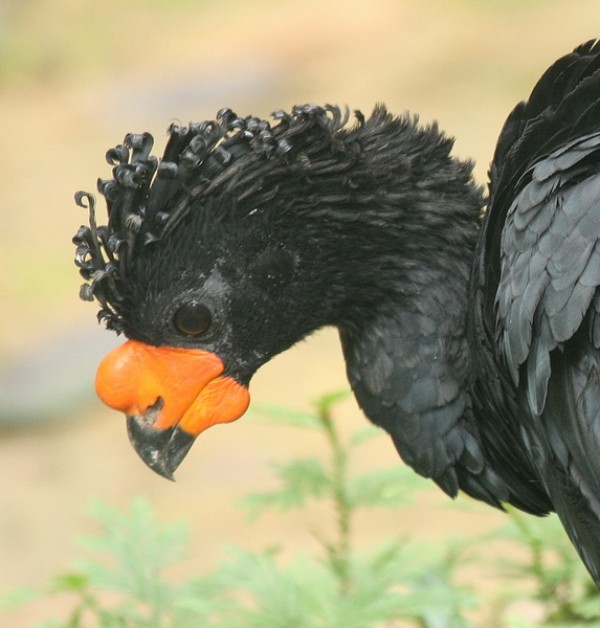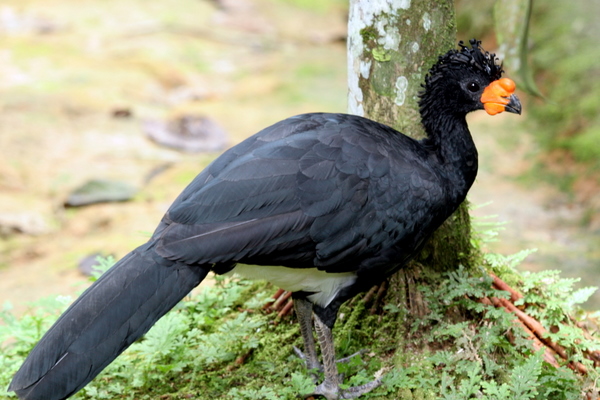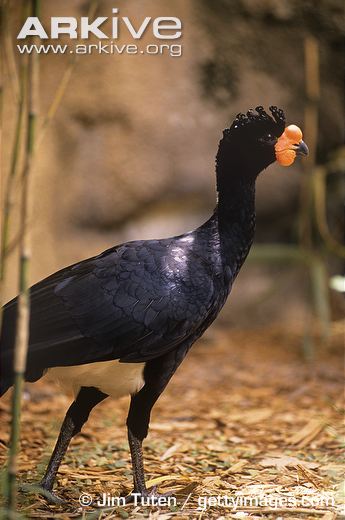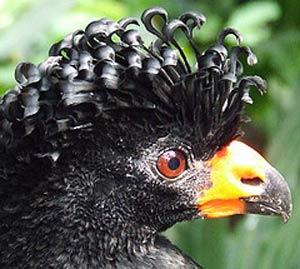
Crax globulosa
SUBFAMILY
Cracinae
TAXONOMY
Crax globulosa Spix, 1825, Rio Solimes, Brazil. Monotypic.
OTHER COMMON NAMES
English: Red wattled curassow, Yarrell’s curassow; French:
Hocco globuleux; German: Karunkelhocco; Spanish: Pavуn
Carunculado.
PHYSICAL CHARACTERISTICS
32.2–35 in (82–89 cm); roughly 5.5 lb (2.5 kg). This is the only
species where the male has red globose ornamentation both
above and below the bill. The female has a red cere and rufous
venter. Male is black with a white belly, females have reddish
brown belly feathering.
DISTRIBUTION
They are found from Colombia and western Brazil to Bolivia.
HABITAT
This species is strongly tied to vбrzea (seasonally flooded) forest
in the Amazon basin. It is almost entirely arboreal.
BEHAVIOR
The wattled curassow has a soft whistle, “yeeeeeee,” which
lasts four to six seconds.
FEEDING ECOLOGY AND DIET
Not known.
REPRODUCTIVE BIOLOGY
No information available about breeding in the wild. In captivity,
clutch size is two eggs; chicks brownish above, light
buff below.
CONSERVATION STATUS
Vulnerable. The wattled curassow is rarely encountered, and
very patchily distributed throughout its geographic range in
the western Amazonian basin. However, this species may be
more difficult to detect than other species because its call is
less easily detected, it is restricted to the higher strata of the
forest, and it often flies away silently in retreat. This species is
threatened by overhunting, and the total population is suspected
of being small and declining. Only future research will
shed more light on the status of this curassow.
SIGNIFICANCE TO HUMANS
This species is often hunted for food, unsustainably in many
situations.
Photo Gallery of - Wattled curassow




 Animalia Life
Animalia Life